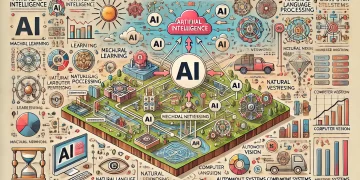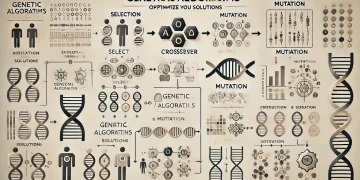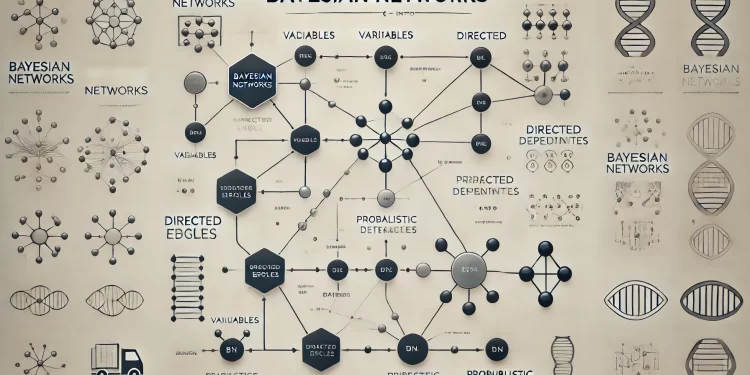The idea behind Bayesian networks goes back to Thomas Bayes, an 18th-century mathematician and theologian. He introduced Bayes’ Theorem, a way to update our beliefs as we get new information. Over the next two centuries, scientists and statisticians applied this idea in fields like medicine, genetics, and decision-making, helping them handle uncertainty in a logical way.
By the mid-1900s, Bayesian methods were already being used in areas like military strategy, weather prediction, and early artificial intelligence. During this time, researchers developed different techniques to improve decision-making under uncertainty. For example:
- Maximum A Posteriori (MAP) estimation helped estimate the most likely outcome based on past experiences.
- Kalman Filters were used in tracking and navigation, allowing systems to update their predictions in real time.
- Belief propagation methods allowed efficient probability calculations in complex networks.
- Naïve Bayes classifiers simplified decision-making by assuming independence between different factors, making them useful for tasks like spam detection and medical diagnosis.
In the 1980s, Judea Pearl built on these earlier ideas to develop Bayesian networks, a structured way to represent how different factors influence each other
How Bayesian Networks Work
Imagine you wake up feeling sick. You have a sore throat, fever, and cough. Is it just a cold, or could it be the flu? To decide, you consider:
- The flu usually comes with a fever, but a common cold might not.
- You remember that flu cases have been increasing in your area, making the flu more likely.
This process, using prior knowledge and updating beliefs based on new evidence, is exactly how Bayesian networks function. They help computers make smart predictions and informed decisions in uncertain situations by continuously adjusting probabilities as new information becomes available.
Structure of a Bayesian Network
A Bayesian network is like a map of possibilities, showing how different factors influence each other. Each factor is represented as a circle (node), and arrows between them indicate cause-and-effect relationships.
For example, in a medical diagnosis system:
- One node represents whether a person has the flu.
- Other nodes represent symptoms like cough, fever, and fatigue.
- If a person has a fever, the probability of flu increases.
- If a flu test comes back negative, the probability decreases.
As new information is added, the network updates its predictions, just like a doctor refining a diagnosis after receiving test results.
How Bayesian Networks Make Predictions
Bayesian networks use two key algorithms to make intelligent decisions:
1. The Inference Algorithm (Answering Questions with Evidence)
Imagine a doctor diagnosing a patient. They enter symptoms into a system, and the system calculates which illness is most likely.
- The algorithm compares all possible causes (flu, cold, allergies) and sees how well they match the symptoms.
- It updates its prediction based on what it already knows and the new information.
- The more evidence the system gets, the more accurate the prediction becomes.
2. The Learning Algorithm (Teaching the System from Data)
Instead of having humans manually define relationships, this algorithm allows computers to discover patterns on their own by analyzing large amounts of data.
- Imagine an AI system analyzing millions of patient records to identify patterns between symptoms and diseases.
- Over time, it learns which symptoms are strongest indicators for each illness.
- This helps improve predictions even without direct human input.
Business Example: Predicting Customer Churn
Imagine you run a subscription-based business like a streaming service, telecom provider, or software company. You want to predict which customers are likely to cancel so you can take action before they leave.
Step 1: Mapping Out the Factors
A Bayesian network models different factors that influence customer churn:
- Customer satisfaction → Are they happy with the service?
- Usage frequency → How often do they use the product?
- Payment history → Have they missed any payments?
- Customer support interactions → Have they frequently contacted support?
- Competitor promotions in their area → Are better deals being offered nearby?
- Contract status → Are they locked into a contract, or on a month-to-month plan?
Step 2: Connecting Influences
Unlike a simple list of factors, a Bayesian network recognizes how these factors affect each other:
- Competitor promotions can reduce customer satisfaction, leading to higher churn.
- Payment issues might indicate dissatisfaction, increasing the risk of leaving.
- If a customer is out of contract, they are more likely to respond to competitor offers.
- Frequent customer support complaints can lower satisfaction, which in turn increases churn.
Step 3: Updating Predictions with New Data
As new data comes in, such as a missed payment, a competitor launching a discount, or reduced usage, the system updates its prediction for each customer.
Step 4: Taking Action
Once high-risk customers are identified, the company can take steps to retain them:
- Exclusive retention offers → Special discounts for at-risk customers.
- Loyalty perks → Free upgrades or personalized benefits.
- Personalized outreach → Contacting month-to-month customers before they consider switching.
- Competitor monitoring → Adjusting pricing or promotions in response to aggressive deals.
This approach helps businesses proactively reduce churn instead of reacting after customers have already left.
Limitations of Bayesian Networks
- They require a lot of data
- They assume precise probabilities.
- Building complex networks is difficult: Automated algorithms can help, but human experts are still needed to ensure the model correctly reflects reality.



































